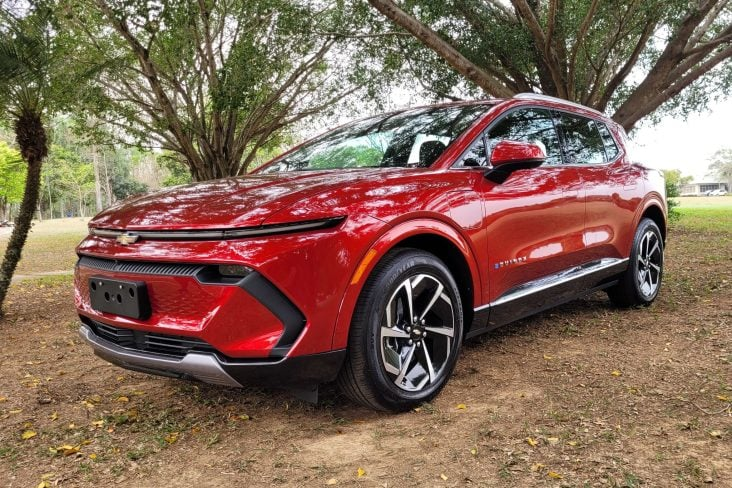In a world increasingly driven by sustainability, the electric vehicle (EV) revolution is no longer just on the horizon—it’s here and transforming our daily lives in ways we might not have imagined just a few years ago. As 2024 rolls in, significant EV incentives and innovations are shaping the future of transportation, making it more accessible and appealing than ever. Did you know that global EV sales are projected to reach 27 million units by 2030, according to Bloomberg Green? In this article, we’ll explore how these changes are impacting our daily routines, from cost savings and environmental benefits to technological advancements and government support.
The Impact of 2024 EV Incentives
Government Incentives Boosting EV Adoption
Governments worldwide are taking bold steps to accelerate the adoption of electric vehicles. In 2024, countries like the United States, Germany, and China continue to enhance their EV incentive programs. Here’s what you need to know:
- Tax Credits and Rebates: In the U.S., the Inflation Reduction Act has extended tax credits up to $7,500 for new EV purchases. Similarly, Germany offers rebates up to €6,000 for electric cars, making them more affordable for the average consumer.
- Infrastructure Investments: Countries are investing heavily in EV infrastructure to support growing demand. The IEA reports that global public charging stations are expected to increase by 40% in 2024.
- Zero-Emission Zones: Cities like London and Paris have introduced zero-emission zones, encouraging EV use by restricting access to combustion engine vehicles.
The Role of Corporate Incentives
Corporations are also playing a crucial role. Companies such as Tesla and Rivian are offering incentives to employees who purchase EVs, while fleet operators are switching to electric vehicles to reduce carbon footprints and operational costs.
Innovations Driving the EV Market
Breakthroughs in Battery Technology
Battery technology is at the heart of the EV revolution. Recent advancements are making EVs more efficient and affordable:
- Solid-State Batteries: These promise higher energy density, faster charging, and longer lifespans. According to PV Magazine, mass production of solid-state batteries is expected by late 2024, which could reduce EV costs by 30%.
- Recycling and Second-Life Applications: Companies like Nissan and BYD are investing in battery recycling technologies, extending the life cycle of batteries and reducing waste.
Next-Generation Charging Infrastructure
The convenience of charging is a significant factor in the widespread adoption of EVs. Innovations in this space include:
- Ultra-Fast Chargers: New ultra-fast chargers can recharge an EV in as little as 15 minutes. InsideEVs reports that Volkswagen plans to install 3,500 of these chargers across Europe by the end of 2024.
- Wireless Charging: Although still in its infancy, wireless charging pads for EVs are being tested in cities like San Francisco, offering a glimpse into a future where charging is as simple as parking your car.
Daily Life with Electric Vehicles
Cost Savings and Environmental Benefits
Switching to an EV can lead to significant savings and environmental benefits:
- Reduced Fuel Costs: The average EV owner can save around $700 annually on fuel costs compared to traditional gasoline vehicles, according to the U.S. Department of Energy.
- Lower Maintenance Expenses: EVs have fewer moving parts, resulting in lower maintenance costs. A study by Consumer Reports found that EV owners spend half as much on maintenance and repairs over the vehicle’s lifespan.
- Carbon Footprint Reduction: By transitioning to electric, each vehicle reduces CO2 emissions by approximately 1.5 million grams annually, contributing significantly to environmental preservation.
Practical Tips for EV Owners
- How to Charge Efficiently: Utilize home charging for convenience and cost savings. Consider installing a Level 2 home charger, which can fully charge most EVs overnight.
- Where to Buy: Explore options from established EV makers like Tesla or newcomers such as Lucid Motors and Rivian. Comparing models for range, cost, and features can help make an informed decision.
- What to Compare: When choosing an EV, consider range, charging time, and available incentives. Websites like AutoCar and Electrek provide detailed reviews and comparisons.
Embracing the Future of Mobility
Electric vehicles are more than just a mode of transport; they are a gateway to a sustainable future. With government support, corporate initiatives, and technological innovations, the transition to electric is becoming seamless and exciting. As we adapt to this new era, the benefits extend beyond personal savings and environmental impact—they are reshaping urban landscapes and redefining mobility.
In conclusion, the 2024 EV incentives and innovations are not just revolutionizing the automotive industry but are fundamentally transforming our daily lives. Whether it’s the ease of charging, the joy of driving an eco-friendly vehicle, or the savings on fuel and maintenance, the shift to electric is a win-win for consumers and the planet. What do you think will be the most exciting development in the EV industry this year? Share your thoughts and join the conversation about this electrifying journey into the future. As we embrace these changes, the road ahead is not only electric but also bright and sustainable.

